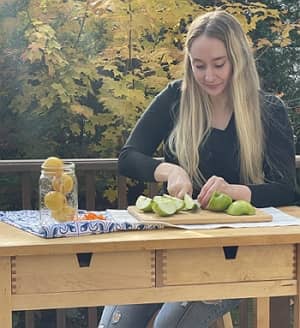2020 is over (thankfully), and we are ready for a fresh start. Most people use this time to set New Year’s Resolutions, typically focused on exercise and diet. As a dietitian, I encourage you to embrace these resolutions! Long-term health is built on staying mindful of the food we eat and the activities we engage in.
But by February, many of us lose steam, only to rekindle our motivation when the weather gets warmer, and we’re wearing fewer layers. So if you’re choosing to adopt a healthier lifestyle this year, what will keep you motivated?
Contents
Step One: Finding Motivation
The first step in behavior change is motivation, whether you’re looking to lose weight, improve your health, or take on a new hobby. Write down why you’re making this resolution—it might be for yourself, your family, or a desire to live a healthier life.
Keep these reasons in a place where you can easily refer to them. Revisiting this list can help reignite your drive when you hit a rough patch.

Working Out Your Way
You’ve probably come across articles discussing exercise and weight loss. There’s a common misconception that working out alone is enough to shed pounds, regardless of what we eat. While exercise is critical for our overall well-being, pairing it with healthy eating is the key to sustainable results.
Physical activity offers benefits like better sleep, heart health, and reduced risk of diabetes. To get the most out of your workouts, focus on smart food choices. Choose lean proteins, whole grains, plenty of fruits and vegetables, and drink lots of water. Poor eating habits can undermine even the best fitness efforts.
We covered the WHY, now let’s talk about the HOW.
The Silver Lining of Staying at Home
One unexpected positive of the pandemic has been the reduction in travel, which has helped lower carbon emissions. With gyms closed, many of us have had to find ways to stay active at home. This can be a great opportunity to integrate home workouts into your routine. Whether through free YouTube videos, subscription services, or even taking daily walks, there are endless options for staying fit from the comfort of home.
Time: The Biggest Hurdle
Finding time for fitness is tough, especially if you’re balancing work and family. But when you incorporate physical activity into your daily routine, it becomes easier to manage. Break down your goals into smaller, attainable steps. A flexible workout plan will help you stay consistent and reduce burnout.
Self-Care and Body Image
Exercise is about more than just physical results. In a world of social media, it’s easy to feel pressure to achieve an “ideal” body type. But being healthy is not defined by being thin or toned. Instead, think of fitness as self-care for both your mind and body.
As someone who has struggled with body image, I understand how difficult it can be to find a routine you enjoy. It took me years of trial and error to settle into daily fitness that made me feel good, not just physically but mentally. I encourage you to explore different activities until you find what resonates with you, whether it’s yoga, HIIT, or simply walking outside.
Staying fit and healthy is a marathon, not a sprint. Focus on long-term, sustainable changes, and don’t compare yourself to others. Fitness should be enjoyable and meaningful to you.
To learn more about what Dining With Nature offers for nutrition care – hit the Explore The DWN Programs button below or take a look at our Services page.

